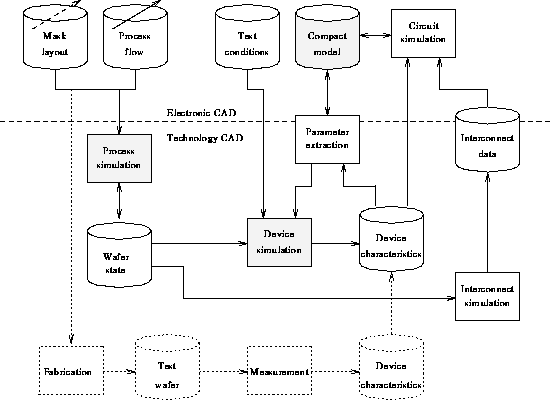
Figure 1.1: Data flow in mainstream Technology CAD





Technology Computer Aided Design (TCAD) is the application and development of computational methods and software tools for the analysis and design of integrated semiconductor devices and their fabrication processes. To clarify the basic terms for further discussion, an overview of the typical mainstream TCAD flow is given in Figure 1.1.

Figure 1.1: Data flow in mainstream Technology CAD
Whereas electronic CAD (ECAD) is primarily concerned with the design of
systems above the device level, Technology CAD is devoted to the
design of single devices (or at most small groups of devices)
and to the design of their fabrication process to meet certain
requirements. Typical low-level design objects in ECAD are mask
layout and equivalent circuits made up of discrete devices and
interconnect models. When the underlying
technology is improved, new compact models and other data is required
to characterize the new technology and to obtain design parameters for
the ECAD domain. These data are provided by Technology CAD and
measurements.
is primarily concerned with the design of
systems above the device level, Technology CAD is devoted to the
design of single devices (or at most small groups of devices)
and to the design of their fabrication process to meet certain
requirements. Typical low-level design objects in ECAD are mask
layout and equivalent circuits made up of discrete devices and
interconnect models. When the underlying
technology is improved, new compact models and other data is required
to characterize the new technology and to obtain design parameters for
the ECAD domain. These data are provided by Technology CAD and
measurements.
But also the occurrence of difficulties in manufacturing is a motivation to use Technology CAD to gain a better understanding and insight into the properties of the technology which are not prone to experimental investigations. Process simulation and device simulation are the two classical, most important ingredients. Both contain technology-dependent physical models (indicated by shaded boxes in Figure 1.1). The main variables that are changed to optimize the design are the process parameters (indicated by the arrow in Figure 1.1).
The typical flow of TCAD starts with the mask layout and process flow of a technology, and first uses process simulation for the ``virtual fabrication'' of a wafer (mostly containing just a single device). This wafer state data is read by interconnect simulators and device simulation programs which either produce device characteristics or return an inquired electrical quantity for specified test conditions. In most cases the device simulation results are used to build efficient compact models for the devices, and parameters for layout extraction and back-annotation which are used in subsequent circuit simulation.
The benefit of Technology CAD is that it will give faster and much cheaper answers to technological questions, provided that the technology-dependent models in the tools are properly calibrated to the actual manufacturing process.
The evolution of TCAD software started with so-called
point tools which were used to solve fairly
isolated process or device
design problems.
The properties of these classical point tools
are dominated by the increasingly complex physical models and
the advances of mathematical methods. The software is
written by a few (approximately  ) experts
distributed
around the world, only a minority of them is aware of the importance
of (unscientific) software issues. The resulting software is
used by
(in the order of
) experts
distributed
around the world, only a minority of them is aware of the importance
of (unscientific) software issues. The resulting software is
used by
(in the order of  )
process and device engineers for a large
spectrum of tasks, like tracking down
faults in manufacturing, finding out how to meet certain
design requirements,
optimizing the yield, or gaining deeper insight into the
underlying physics.
)
process and device engineers for a large
spectrum of tasks, like tracking down
faults in manufacturing, finding out how to meet certain
design requirements,
optimizing the yield, or gaining deeper insight into the
underlying physics.
During the past years these tools have been integrated with other services (like visualization, interactive design editing facilities, a tool control level) to form Technology CAD systems. An overview of different existing TCAD systems is given in [4], and in Section 1.2 and Section 2.2.
To support the users, most of these TCAD systems have been and are currently equipped with converter-based tool coupling, homogenizing user interfaces and TCAD-specific task level environments which are often centered around typical design tasks like optimization. This is very effective in facilitating the current use of the system, but it does not address the real software-related difficulties retarding the progress of Technology CAD.




